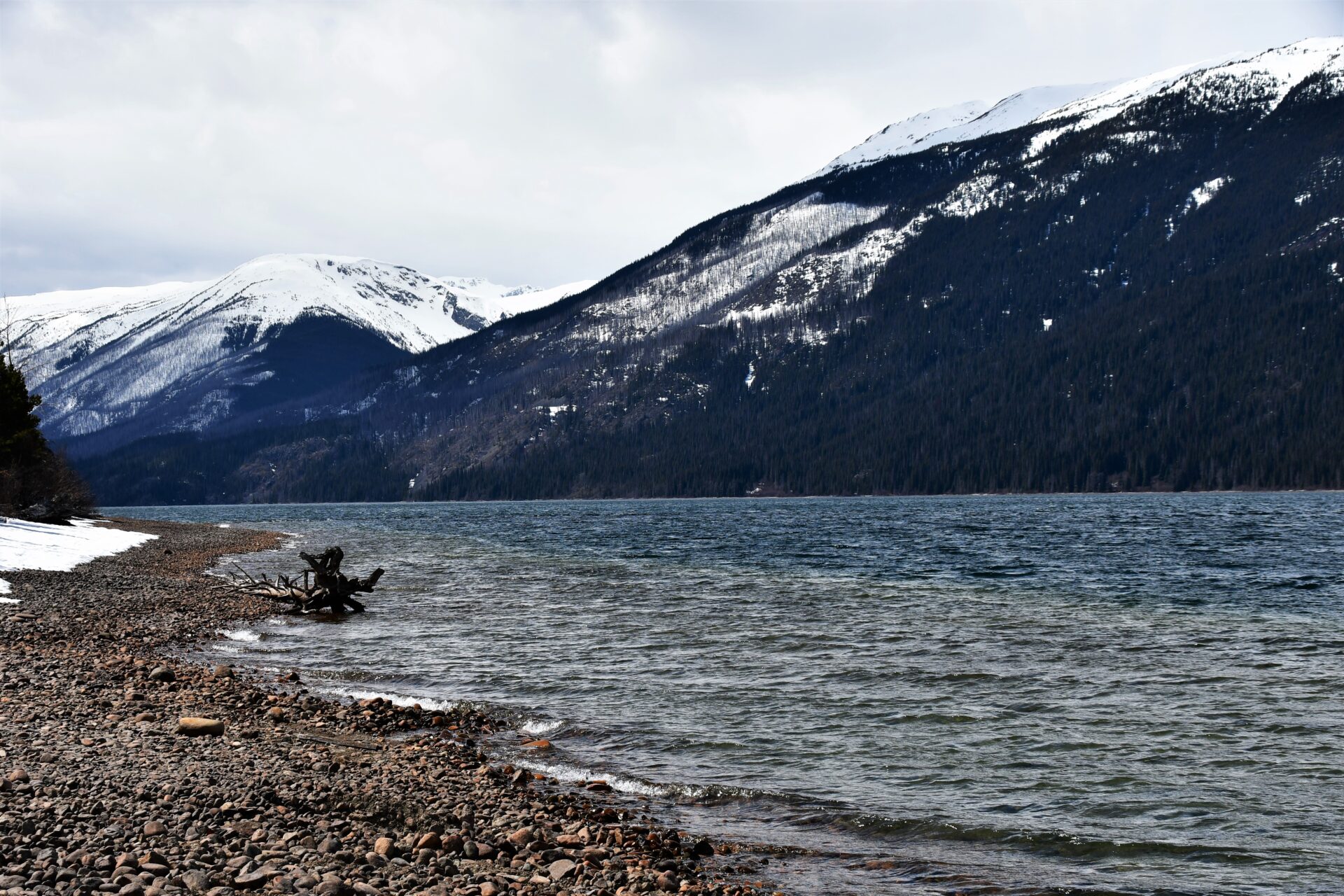A Small Piece of the Puzzle: Monitoring Juvenile Salmon to Sustain the Future
Snow lingers along the shore of the lake, slowly melting towards the tree line. The contours of the mountain peaks and valleys are still defined by ice and snow. Below, the lake reflects a dark grey with white-capped waves. As the sun peaks out of the clouds and hits the water, it shines back in vibrant blues and greens. A jewel surrounded by wilderness.
Morice Lake is at the heart of Wet’suwet’en territory. Although the surroundings here are tranquil, you do not have to go too far to see the tensions of resource extraction. Pipeline development and logging activity are present just down the forest service road, the only accessible route to Morice Lake.
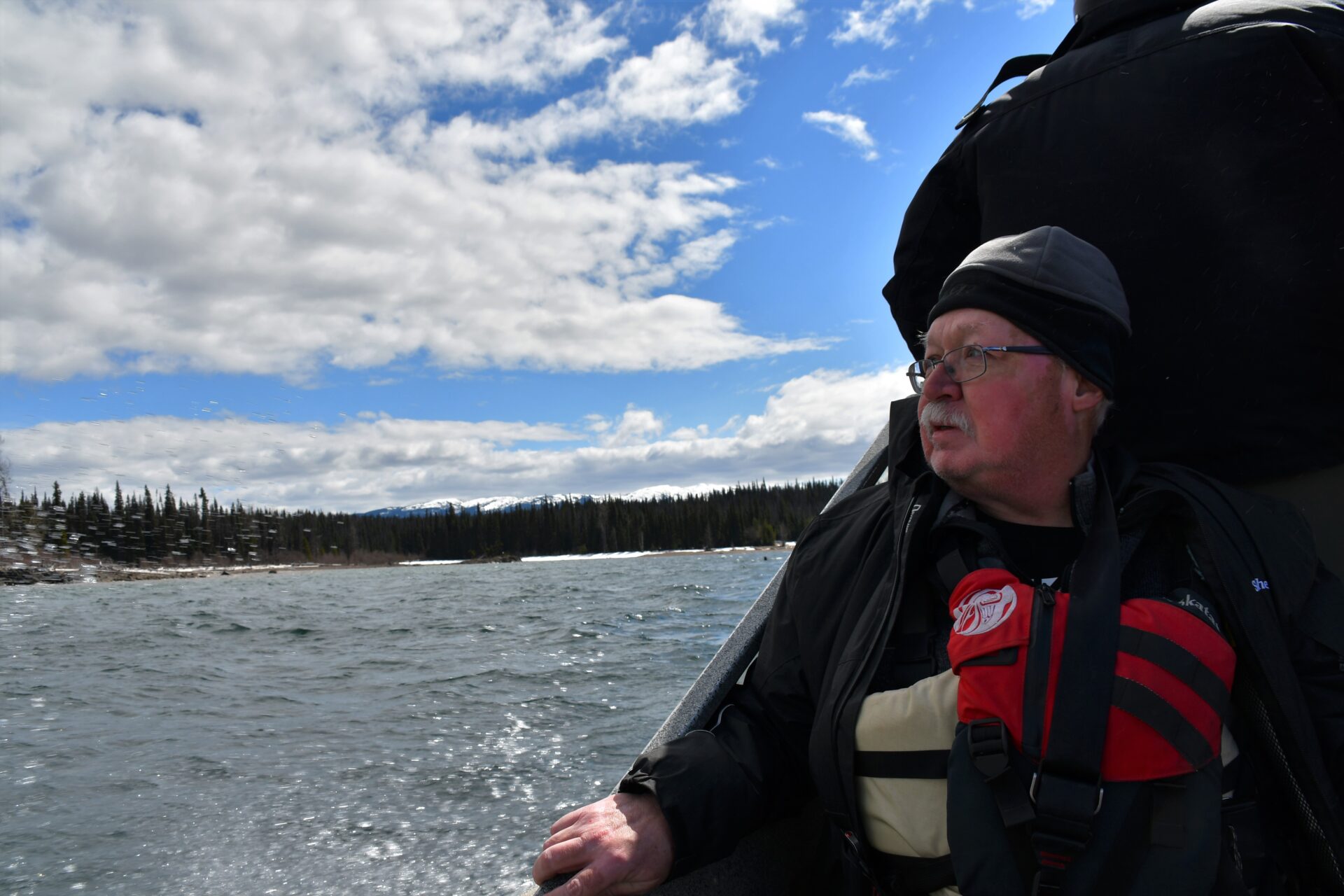
The lake and the surrounding mountains are critical to the Wet’suwet’en as they are what provide life to the Sockeye Salmon and in turn the Wet’suwet’en people.
“Morice Lake and the surrounding mountains are the headwaters for the Wedzin Kwah. All the stocks that the Wet’suwet’en depend on spawn and return to these waters,” said Walter Joseph, Fisheries Manager for the Office of the Wet’suwet’en. “[This area is] critical to the Wet’suwet’en. I don’t know if you would be Wet’suwet’en without access to the Sockeye or other salmon stocks.”
Restoring Sockeye stock is a high priority for the Wet’suwet’en. Sockeye in Morice Lake are the last anadromous population remaining on the community’s traditional territory and are critically important for their food, social, and ceremonial needs. Sockeye have provided for the Wet’suwet’en for thousands of years.
“Right now, the stocks are too low to meet food fish needs. The community has not met its needs since the mid-90s. In the last few years, the stocks have continued to decline,” said Walter.
Walter is leading the Juvenile Sockeye Salmon Monitoring Project for the Office of the Wet’suwet’en at Morice Lake. The data collected from this monitoring project will help inform the steps needed to rebuild the sockeye stocks. Over the early weeks of spring, the project crew traps sockeye smolts as they migrate out of Morice Lake down to the ocean. Smolts are the salmon fry that have spent two to three years in fresh water and are now ready to enter salt water. As the smolts are captured they are measured, weighed, and scale samples are taken.
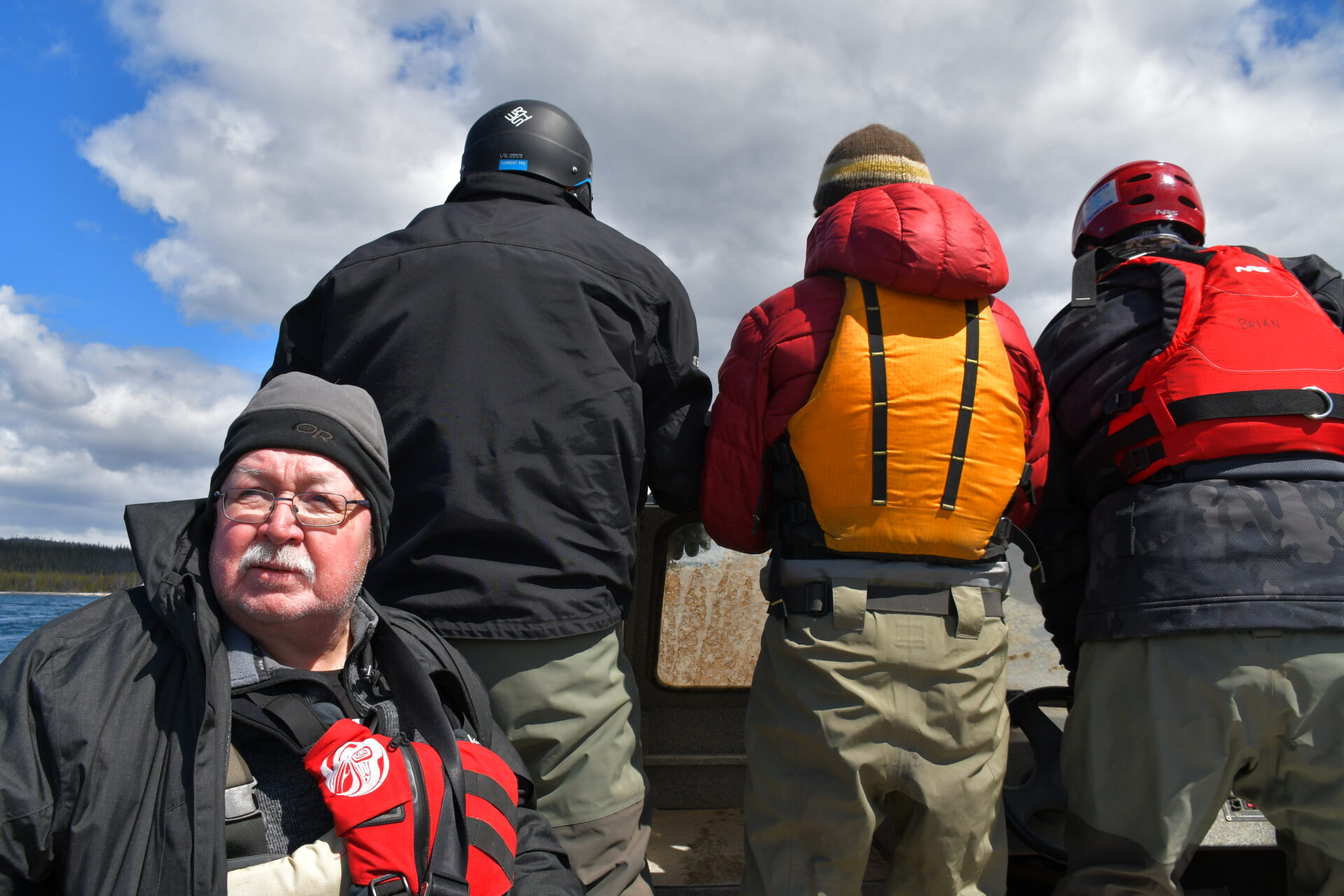
A 2006 report by Wet’suwet’en Fisheries on the Morice-Nanika Sockeye Recovery, indicates several reasons why the Sockeye Salmon stocks of Morice Lake are in decline, “Three factors are believed to currently be limiting production: low escapements [salmon that escape commercial and recreational fisheries as they make their way back to freshwater to spawn] and fry recruitment [small, young fish that are transitioning to an older, larger life stage], low in-lake growth, and nutrient limitation.
Low fry recruitment means that there may be factors within Morice Lake that are hindering juvenile salmon populations from reaching the smolt stage of their life, thus preventing the population from rebuilding to its former abundance. The project team hopes to gain an understanding of this one part of a salmon's life history that might be a cause of significant mortality.
Although this monitoring project focuses on Sockeye, other salmon stocks in the watershed are also in decline.
“We have our hands full now working with the Sockeye,” said Walter, but he has no doubt similar work will have to be done for these other species of salmon.
The Fundamental Importance of Monitoring
Michael Price makes his way up the 80-kilometer forest service road to the project team’s camp at Morice Lake. It is a drive where the conflicts between industry and people over the natural resources of the land cannot be ignored. Being pulled over by the police, in seemingly the middle of nowhere, is a very real occurrence.
Michael is a Ph.D. candidate at Simon Fraser University and the Director of Science for Skeena Wild Conservation Trust. He was the lead on the Morice Sockeye Salmon Rebuilding project of the Wet’suwet’en Treaty Office Society, one of the projects funded by the Healthy Watersheds Initiative.
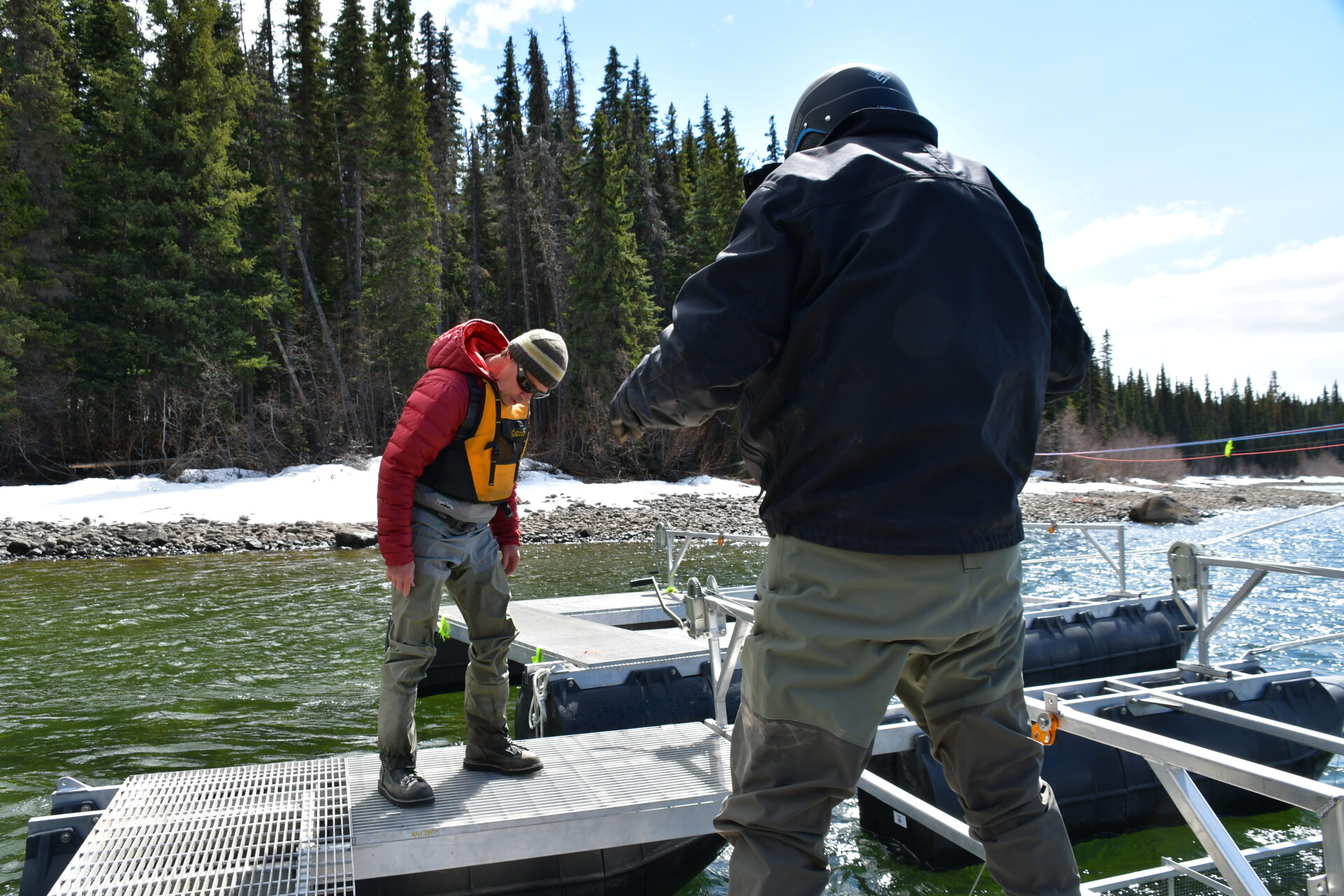
This project supported the Wet’suwet’en Treaty Office Society to expand its water monitoring program to capture data on the distribution, life history, and genetic diversity of salmon spawning in the Upper Bulkley and Morice watersheds. The Juvenile Salmon Monitoring project expands on this work.
Michael sees monitoring and the collection of data as fundamentally important in helping society make better decisions on land use.
“I see this project as being one piece of the puzzle that we are trying to solve and that is attempting to rebuild this population to somewhat near historical levels of abundance,” said Michael.
Michael has been working with salmon and conducting salmon research since the early 2000s. His passion for this work is driven by the hope to one day see salmon stocks and the communities that depend on them thrive.
“For salmon, there has been a general injustice over the last century. A disrespect for them. Not enabling them to thrive when we could have. In combination, there has been a great injustice to Indigenous communities,” said Michael. “I want to see salmon; see Indigenous people and the connections they have with salmon thrive. I think it would make for a much more enjoyable world.”
As Michael approaches the Morice Lake camp, you can see why he makes the trip every couple of weeks to join the crew and help with the monitoring project. Besides the stunning view of the lake and snow-capped mountains, the camp is equipped with wall tents, satellite wifi, an espresso machine, and two brothers who enjoy cooking.
To Walk on the Backs of the Sockeye
James Brian Michell and Gary Michell are members of Cenegh Lhiy Yikh (House of Many Eyes) Laksilyu Clan. James has worked as a Fisheries Technician for the Office of the Wet’suwet’en for 27 years. Gary has worked as the Fish and Wildlife Ranger with the Wet’suwet’en Nation for 11 years.
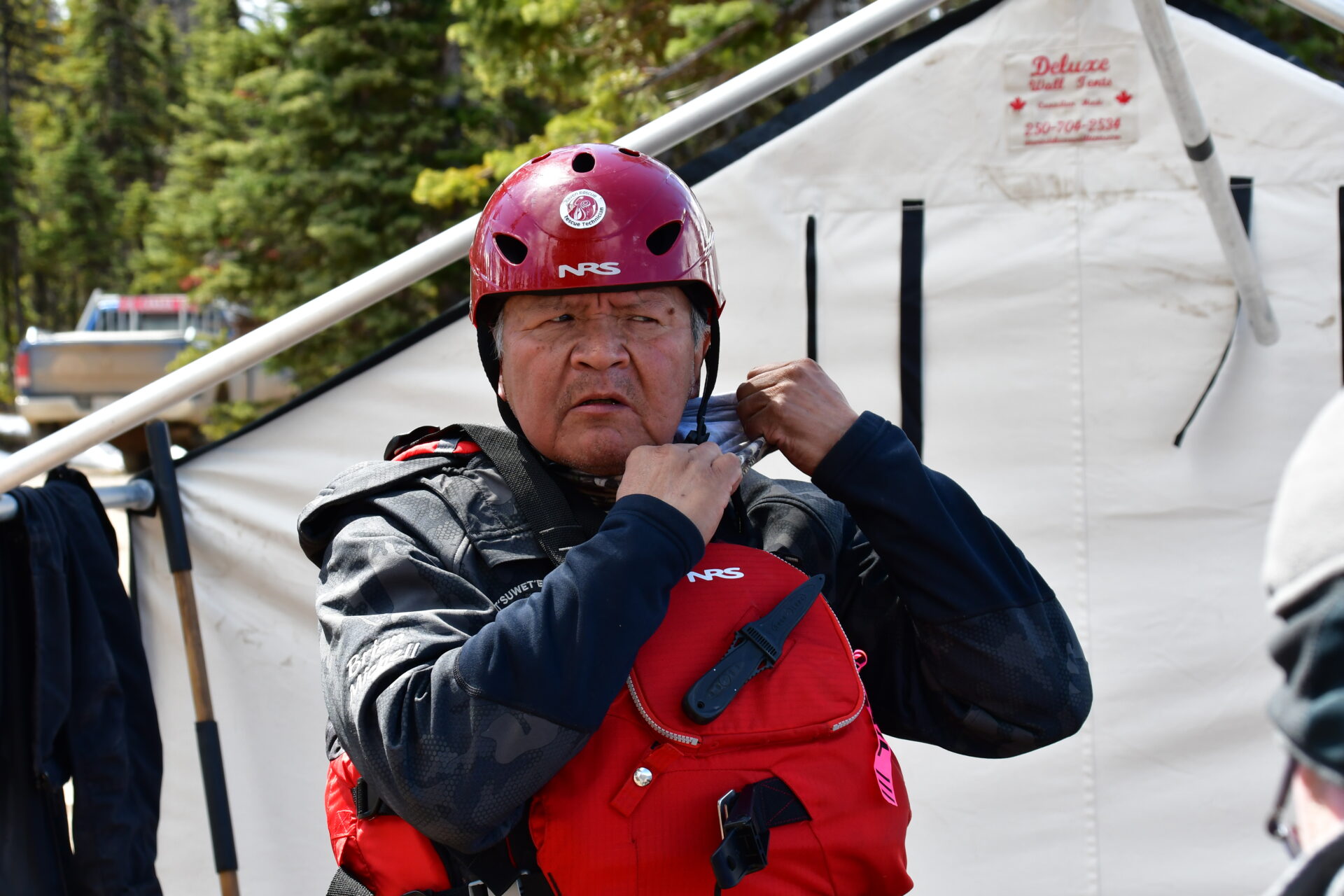
Although trips back home are possible for the crew, James plans to stay at the camp for the entirety of the smolt window. Smolts typically leave Morice Lake from mid-May to mid-June. James and the project team began setting up the equipment and the camp several weeks before the smolts started their journey. A 4 to 8-week camping trip might not be for everyone, but for James being out at Morice lake provides a much deeper connection.
“The first time I came up here and saw this river, it felt like I was here before. My ancestors were talking to me. That’s the way I felt,” said James.
Every morning the crew gears up in their waders, waterproof jackets, life jackets, and helmets. They are covered head to toe, protecting them not just from getting wet, but from the brisk wind that funnels down the lake. They pack into their jet boat and head north for a short, bumpy ride to the mouth of the Wedzin Kwah where two large metal traps are set up. There are another two traps at the mouth of the Nanika River, which is south of base camp.
“We check the site every morning and make sure everything is okay. The monitoring is a 24-hour cycle,” said James.
This means another bumpy ride in the jet boat is taken later in the afternoon, where the crew will start collecting the data from the smolts captured that day.

“Numbers are important. We’re not going to catch them all, but it will give us some data on what sockeye come to spawn,” said Gary. “The more information we get on the Sockeye, the better.”
As the Fish and Wildlife Ranger for the Office of the Wet’suwet’en, Gary enjoys every opportunity he gets to be out on the land.
“I love my job. It is the best job in the world. I look after our territory. I do patrols from Smithers to here. This is my office right here, what you see behind me.”
Gary looks out onto Morice Lake and the surrounding mountains, “Look how beautiful that is. I have to say I want my future self and my grandchildren to be able to see this and the children not born yet to see this. I want this pristine for them at all times. That is why I do what I do.”
For the Michell brothers, this work is important because they want to see a future where the days of the past, when salmon were abundant, can be relived.
“I talked to some elders in the canyon and before, when the sockeye came up, that river used to look black,” said Gary, “Those were the days when it used to be plentiful.”
“The Wet’suwet’en, we love our salmon. We’re never going to stop,” said James. “Until we can walk on the backs of the Sockeye. That is our goal.”



